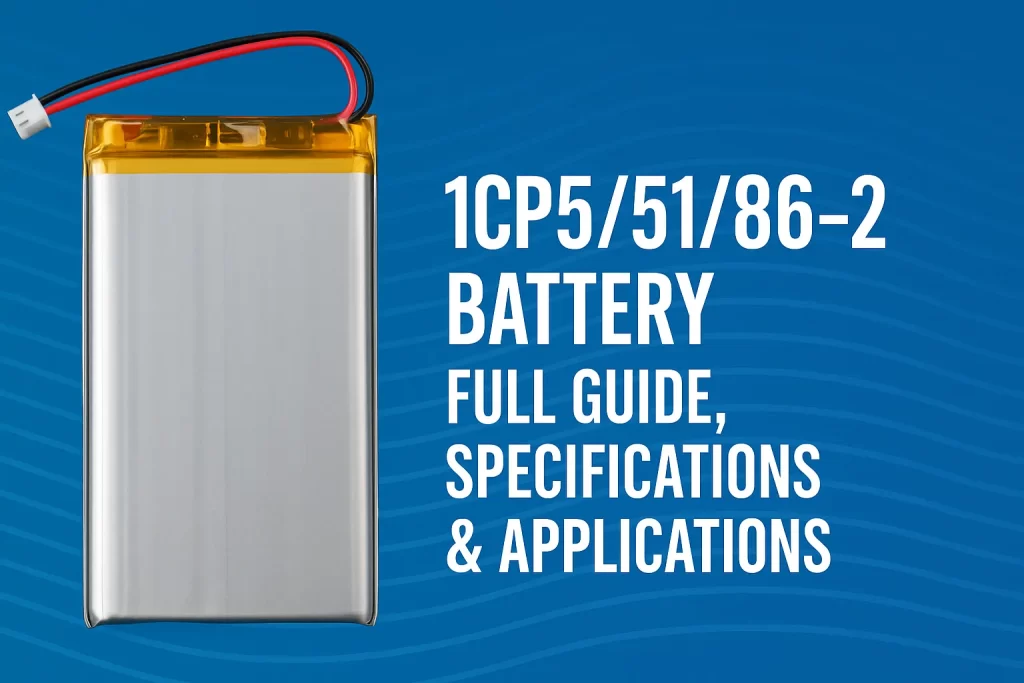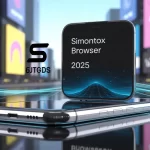Table of Contents
In an age where mobility, compactness, and performance rule the electronics world, battery technology continues to advance at lightning speed.
Among the many lithium-polymer batteries on the market, the 1ICP5/51/86-2 battery stands out as a reliable power source for various high-demand consumer and industrial electronics.
This guide dives deep into the specifications, use cases, safety precautions, performance advantages, and practical handling tips related to this battery model.
What Is the 1ICP5/51/86-2 Battery?
The 1ICP5/51/86-2 is a rechargeable lithium-polymer (Li-Po) battery cell that adheres to the IEC naming standard. It is a single-cell battery designed for lightweight, compact electronic devices.
It offers a perfect balance between energy density, portability, and design flexibility, making it a popular choice among device manufacturers and tech engineers.
IEC Label Breakdown:
- 1ICP – Indicates a single lithium-ion polymer cell.
- 5/51/86 – Refers to the dimensions in millimeters (5 mm thick, 51 mm wide, 86 mm long).
- -2 – Typically a versioning or manufacturing code.
This battery model is frequently found in devices such as smart tablets, handheld scanners, e-readers, IoT gadgets, portable medical devices, and more.
Detailed Specifications of the 1ICP5/51/86-2 Battery
Understanding the technical specifications of this battery is crucial when deciding on compatibility with your device or project.
| Feature | Specification |
|---|---|
| Battery Type | Lithium-Polymer (Li-Po) |
| Configuration | Single-cell |
| Nominal Voltage | 3.7V |
| Charge Voltage | 4.2V (Maximum) |
| Cut-off Voltage | 3.0V |
| Capacity Range | 3000mAh – 4000mAh (depending on brand) |
| Dimensions | Approx. 86mm × 51mm × 5mm |
| Weight | ~60g |
| Energy Density | High |
| Cycle Life | 300 – 500 full charge/discharge cycles |
| Operating Temperature | -10°C to 60°C (discharge range) |
| Storage Temperature | 0°C to 45°C |
Common Applications of the 1ICP5/51/86-2 Battery
Because of its size and capacity, the 1ICP5/51/86-2 battery is widely used in a variety of compact and mobile devices. Here are some of its common applications:
Read also: 185.63.253.2pp
Consumer Electronics
- E-book readers (e.g., Kindle, Kobo)
- Tablets and hybrid laptops
- Bluetooth speakers and headphones
- Smart TV remotes
Industrial Equipment
- Barcode scanners and RFID readers
- Handheld POS terminals
- Inventory management tools
- Rugged handheld devices
Medical and Health Tech
- Portable monitors
- Pulse oximeters
- Wireless ECG and heart rate devices
Internet of Things (IoT) Devices
- Smart thermostats
- GPS trackers
- Wearable health monitors
Its ability to hold a significant charge in a slim profile makes it especially attractive for space-constrained applications.
Key Advantages of the 1ICP5/51/86-2 Battery
High Energy Density
The battery delivers more power per unit volume, meaning it can support longer operating times in devices without increasing size or weight.
Slim and Lightweight Design
Its compact dimensions (just 5 mm thick) make it ideal for ultra-thin devices where bulkier cylindrical or prismatic batteries wouldn’t fit.
Rechargeable and Cost-Efficient
With 300–500 charging cycles, this battery model offers long-term cost savings over disposable alternatives.
Enhanced Safety Features
Li-Po chemistry minimizes leak risk and thermal instability. When combined with a protective circuit board (PCM) or Battery Management System (BMS), these batteries become even more stable.
Environmentally Friendlier Composition
Compared to traditional batteries, Li-Po batteries have fewer toxic heavy metals and are more recyclable when disposed of properly.
Safety and Handling Guidelines
Lithium-polymer batteries require proper handling to prevent damage, fire, or reduced lifespan. Below are best practices:
Safe Charging
- Use only a certified charger rated for 3.7V Li-Po cells.
- Avoid overcharging: Once the battery hits 4.2V, disconnect the charger.
- Use a charger with built-in overvoltage protection.
Safe Discharging
- Never discharge the battery below 3.0V.
- Devices should include a low-voltage cut-off to protect the battery.
Storage
- Store at room temperature (15°C to 25°C).
- Charge to 40–60% capacity before long-term storage.
- Keep away from metal objects, water, and direct sunlight.
Damage Prevention
- Do not puncture, crush, or expose to flames.
- Discontinue use if the battery swells, leaks, or emits a foul smell.
- Place defective batteries in fireproof containers.
Charging Cycles and Battery Life Optimization
To get the most out of your 1ICP5/51/86-2 battery, you need to maintain optimal charge/discharge cycles. Here’s how:
Tips for Longer Life
- Avoid deep discharges; keep the charge between 20% and 80%.
- Do not leave the battery at 100% or 0% for extended periods.
- Use slow or standard chargers instead of fast chargers unless supported.
- Keep it cool – heat is the #1 enemy of battery longevity.
How to Identify a Genuine 1ICP5/51/86-2 Battery?
With fake batteries flooding online marketplaces, you need to verify authenticity before purchasing:
Authentication Checklist
- Printed model number and voltage/capacity
- Presence of certification marks (CE, RoHS, UL)
- Reliable manufacturer or distributor
- Accompanied by a data-sheet or spec sheet
- Consistent weight and size compared to verified models
Avoid sellers who don’t provide product documentation or deliver suspiciously lightweight batteries.
Custom Battery Pack Integration
Tech engineers may customize the 1ICP5/51/86-2 into battery packs for unique projects or products.
Popular Custom Add-ons
- PCM (Protection Circuit Module)
- Temperature sensors (NTC resistors)
- Customized connector cables (e.g., Molex, JST)
- Adhesive tapes or brackets for mounting
If you’re designing a custom solution, always consult with a battery pack manufacturer who specializes in Li-Po integration and safety compliance.
Disposal and Environmental Impact
Lithium-polymer batteries are not biodegradable and must be disposed of with care:
Proper Disposal Steps
- Discharge the battery fully if possible.
- Cover the terminals with non-conductive tape.
- Place in a sealed bag or fireproof box.
- Drop off at a certified e-waste or battery recycling center.
Never throw a Li-Po battery into the trash, as it poses fire and environmental risks.
Comparison: 1ICP5/51/86-2 vs Other Lithium Batteries
| Feature | 1ICP5/51/86-2 | 18650 Li-Ion Cell | AAA NiMH Battery |
|---|---|---|---|
| Chemistry | Li-Po | Li-Ion | NiMH |
| Voltage | 3.7V | 3.7V | 1.2V |
| Form Factor | Flat/Rectangular | Cylindrical | Cylindrical |
| Capacity | Up to 4000mAh | Up to 3500mAh | ~1000mAh |
| Recharge Cycles | 300–500 | 500–1000 | 500+ |
| Size Flexibility | High | Low | Low |
The 1ICP5/51/86-2 offers more design flexibility and space efficiency, making it more suitable for thin-profile electronics than its cylindrical counterparts.
Final Words
The 1ICP5/51/86-2 lithium polymer battery is a high-performing, reliable, and compact power solution for a wide range of modern devices.
Whether you’re sourcing batteries for industrial design, consumer electronics, or DIY electronics projects, this model delivers long-lasting power in a space-saving format.
By understanding its specifications, charging behavior, safety measures, and lifecycle, you ensure that your battery performs optimally while reducing risks and extending product longevity.






